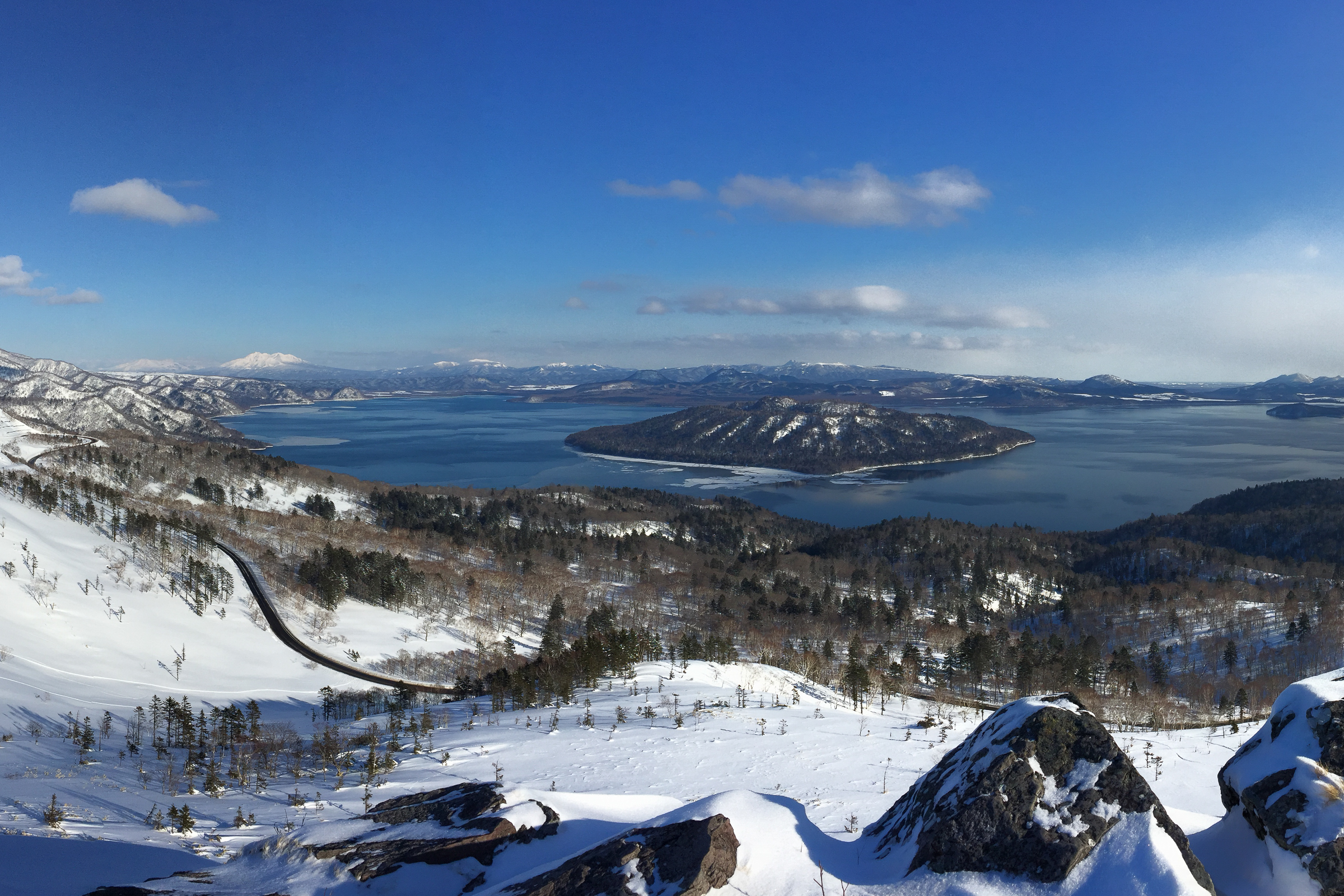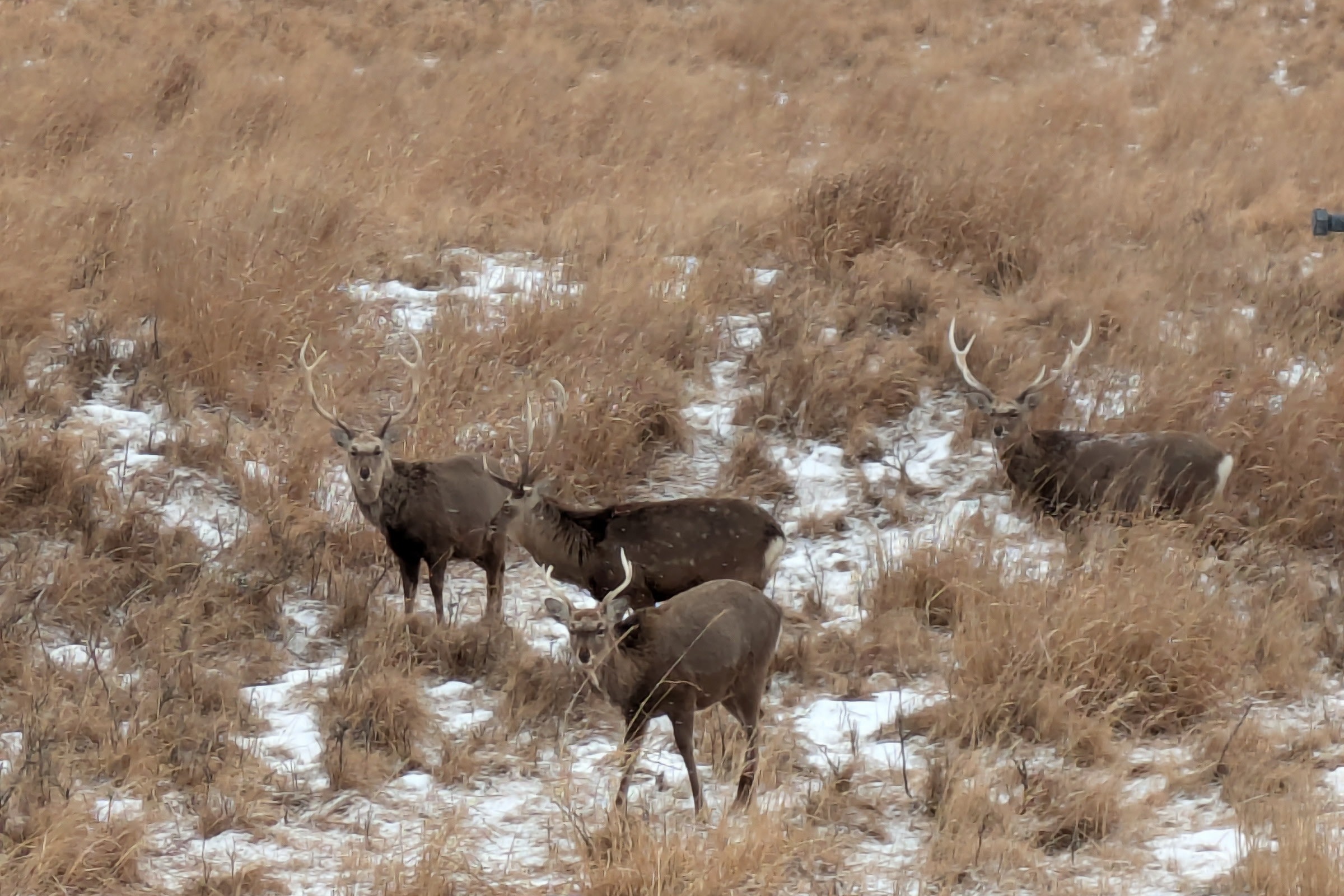Explore the serene beauty of Akan–Mashu National Park in its winter dress
Observe the wildlife including the Whooper Swans, winter visitors who make the warm water of Lake Kussharo their favourite home.

A winter odyssey in Japan’s eastern frontier, touring through two national parks in eastern Hokkaido. Be mesmerised by the extraordinary snow-kissed landscapes, the unique wildlife experiences, and the warmth of hot springs.
Hokkaido’s far east region is often described as the last unexplored frontier of Japan. This region is popular for wildlife and outdoor lovers in the summer. It is also renowned internationally in winter as a bird-watching destination.
On this tour, we will visit some of Hokkaido’s beautiful national parks: Akan–Mashu and Kushiro Shitsugen National Park. We take in beautiful winter landscapes while hiking at our favourite locations, such as the shore of Lake Kussharo - a volcanically active area that serves as a sanctuary for migratory Whooper Swans.
You don’t have to be an experienced skier or snowboarder to enjoy Hokkaido’s famous snowy winter. We will use snowshoes to hike through the snowy landscape, allowing anyone to enjoy Hokkaido’s winter scenery.
Observe the wildlife including the Whooper Swans, winter visitors who make the warm water of Lake Kussharo their favourite home.
Experience a volcanic landscape - from deep blue caldera lakes to active sulphur vents.
Visit a Red-crowned Crane sanctuary in Tsurui to observe Japan’s most symbolic bird.
Discover a variety of wildlife on the Notsuke Peninsula, registered as a Ramsar site.
We will meet at our hotel at 6:00 pm near JR Abashiri Station in Abashiri, the largest city on Hokkaido’s eastern Sea of Okhotsk coast. Once everyone is gathered, we will set off for dinner in downtown Abashiri. Over dinner, We will get to know each other and introduce the program for our upcoming adventure. For those who aren’t used to walking on icy roads, we will introduce you to the penguin-walking technique!
After breakfast at our hotel, we embark on a scenic journey along the Sea of Okhotsk coast to Lake Tofutsu. This remarkable wetland, a designated Ramsar site, offers opportunities to observe sea eagles and various migratory birds in their natural habitat.
After lunch and some marvellous views from Bihoro Pass, the highlight of our day takes place at Wakoto Peninsula, where we'll enjoy a snowshoe excursion or regular walk, depending on snow conditions. We'll discover fascinating steam vents that demonstrate the area's volcanic activity and enjoy stunning views of Lake Kussharo. Our final stop of the day is Mt. Io, an active volcano known for its impressive sulphur vents.
We'll spend the night in a local hot spring town and you'll have the opportunity to experience these healing waters during your stay.
After breakfast, we'll begin our day with a peaceful snowshoe excursion through a local pristine forest, predominantly composed of old-growth Sakhalin Spruce, offering a serene winter landscape typical of Eastern Hokkaido.
Our next destination is the Lake Mashu No.1 Observatory, where we'll take in the breathtaking views Lake Mashu, a caldera lake renowned for its extraordinary clarity and deep blue waters. If time allows and the group is keen, we can make a stop at Suigo Park in Teshikaga town, where we may catch a glimpse of migratory Whooper Swans and other waterfowl.
In the afternoon, we'll enjoy another snowshoe adventure north of Lake Mashu, where we'll walk along a tranquil stream fed by spring water originating from the lake. The stream never freezes, providing a vital water source for birds and wildlife. We'll trek through lush forests of Sakhalin Fir while looking for animal tracks along the way.
Our day concludes at Yoroushi Onsen, our accommodation for the night. Its unique location is alongside a river where the rare Blakiston's Fish Owl, the world's largest owl species, occasionally visits to feed in the evening.
Notsuke Peninsula is Japan’s largest sand spit extending over 26 km into the Sea of Okhotsk. Registered by the Ramsar Convention, the peninsula is of ecological significance to the migrating birds and wildlife of Hokkaido.
After breakfast at our accommodation in Yoroushi Onsen, we will drive for over an hour to the Notsuke Peninsula. We will explore the area on foot and hopefully see some of Hokkaido's iconic land mammals such as Japanese Deer and Red Foxes.
After the walk, we will return to our hotel at Yoroushi Onsen where we can again relax in the river side hot-springs and have another chance of seeing the rare Blackiston’s Fish Owl.
This morning we will head back inland and slowly make our way to Tsurui. The drive passes through beautiful rolling farmland. If time allows, we will stop off for an early lunch just outside Tsurui.
Tsurui is famous for its role in the recovery of the Red-crowned Crane population. The number of cranes has rebounded to almost 2000 after dropping to less than 20 in the early 1900s. The Tsurui Ito Red-crowned Crane Sanctuary has played a big part in this by feeding the cranes over winter, when their natural food sources are scarce. We will spend some time at the Sanctuary watching the cranes feed and socialise.
Tsurui isn't just about cranes– after the sanctuary we will head out to explore the surrounding area and try to track down eagles feeding along the rivers and owls sleeping in the forest. We will return to Tsurui in time to catch the cranes flying back to their evening roost before heading to our hotel.
This morning, there's the option for a pre-sunrise excursion to see the cranes along the Setsuri River, a popular nesting site for the Red-crowned Cranes. The bridge provides a spectacular view of the birds before they head out to feed for the day.
After breakfast, we'll leave for Lake Toro, where we will wrap up warm and enjoy a canoeing adventure through the Kushiro wetland. Being on the water gives us a unique perspective of the winter landscape, the trees lining the river bank beautifully covered in snow and ice. This particular location is a habitat for Common Kingfishers and Crested Kingfishers. After canoeing, we will warm up in a nearby cafe for lunch.
On our way to Kushiro city, we’ll stop by a wetland observatory to take in the vastness of Kushiro Shitsugen. Tonight, we will celebrate the completion of our tour over dinner.
The tour finishes after breakfast today. We will drive you to Kushiro Airport or JR Kushiro Station in the morning. From Kushiro Airport (KUH), there are direct flights to Sapporo New Chitose (CTS), Tokyo Haneda (HND), and Osaka Kansai (KIX).

“A wonderful tour in a beautiful corner of Japan.”
A wonderful tour in a beautiful corner of Japan. The scenery was stunning, sometimes very stark and dramatic but also very beautiful, it is a photographer's paradise and a bird watcher's paradise. The traditional onsen were a fabulous addition to the overall experience and our guides were very knowledgeable and fun to travel with.
Fiona from Australia
This tour includes a series of active experiences that while easygoing will still allow you to experience the great outdoors and work up a bit of a sweat! We will be outdoors in subzero temperatures for up to 4 hours at a time before returning to the van and travelling to the next stop. While it is cold outside, it will be warm in the van and indoors. This makes it easy to warm back up, but makes good layering important - make sure you check the packing list. Your luggage will stay in our van, freeing you up to enjoy the day’s adventure with only a light day pack. There is also a focus on the region’s wildlife and you will have multiple chances to catch a glimpse at some of Hokkaido’s incredible migratory winter creatures.